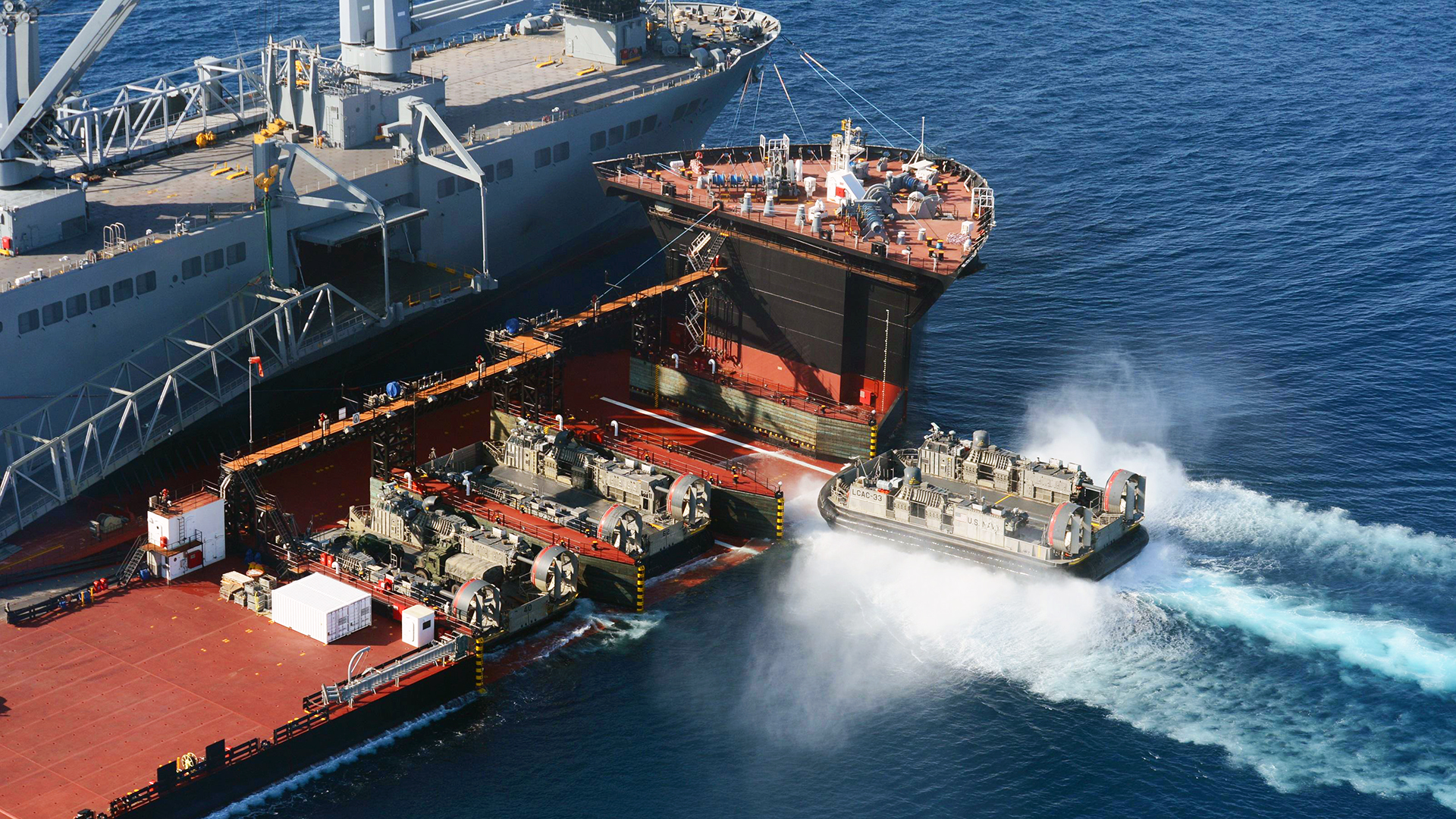Five months after the attacks by Hamas on Israel sparked what has been an incredibly violent war, according to multiple reports, the Biden Administration is planning to set up a beachhead to move large amounts of aid to Gaza, from ship to shore. Such an operation, which would be fraught with risk, comes days after the United States joined a growing number of countries executing airdrops of aid into Gaza. Significant portions of the Gaza Strip have been largely destroyed by tens of thousands of Israeli strikes and ongoing ground fighting.
Politico reports that Biden will formally announce the plan during his State of the Union address tonight. Citing three undisclosed senior administration officials, the outlet states that “Biden will order the U.S. military to establish a temporary port in Gaza so more humanitarian aid can get to Palestinians in need.” One administration official has reportedly said the plan will not “require U.S. boots on the ground.” How exactly that is possible is not clear. Gaza currently has no functioning port facility.
This new temporary port will be used to transfer food, water, and medical supplies, as well as other forms of assistance, to those in Gaza, according to Politico’s report. A maritime corridor from Cyprus to Gaza will utilize this port facility and the Biden administration is trying to get “governments and commercial partners” to make this vision a reality. This maritime aid conduit will be supplemental to existing land routes, namely the Rafah Crossing that sits between Gaza and Egypt, the primary corridor for aid, as well as a new crossing that Israel has reportedly agreed to open, and additional airdrop operations.
Aid coming via these other avenues is nowhere near enough to sustain over two million people trapped in Gaza, much of which has been partially destroyed and with some parts having been totally decimated. The situation continues to devolve and what is already a humanitarian catastrophe of major proportions could become far worse as time goes on.
The ability to move bulk cargo via ship would certainly help in this regard and is far more efficient than doing it via trucks and piecemeal airdrop operations, but the risk involved with such an undertaking could be substantial. Hamas is still in de facto control of large parts of Gaza and its influence and military power reigns throughout heavily populated areas of the Strip. While degraded significantly by Israel’s operations, it is still well-armed and has considerable personnel that can blend directly into the populus. Bringing in large quantities of aid in a centralized location under such conditions will be extremely risky, especially considering Hamas has mortars, artillery rockets, and anti-tank guided missiles.
Then there is the desperation for survival that permeates Gaza. Keeping back the masses alone could be extremely problematic. One would be remiss to forget the situation U.S. troops and many citizens of Kabul endured during America’s exit from Afghanistan via a similar fixed position. Under those circumstances, the Taliban was largely playing nice with the U.S. military and even helped with controlling the situation in many instances. Hamas sees the U.S. government as a direct backer of Israel and its actions against them and the Palestinian people. The U.S. has shipped loads of guided bombs to Israel to support its air campaign in Gaza, for instance.
On top of this, there is the question of where the aid will actually end up once it is in Gaza. Hamas is well known for seizing aid for its own use and/or distributing it on its own accord. The U.N. and NGOs that are established in Gaza would be key players in executing an equitable distribution scheme, but they have limited ability to protect the aid from confiscation by Hamas and other militant organizations.
Of course, like any operation, the devil is very much in the details. How exactly the U.S. government intends to pull this off isn’t clear, especially without ‘boots on the ground.’ Multiple options exist, including unique capabilities that would not require huge ships to literally dock in Gaza to convey large payloads of aid.
One that comes to mind is using the Navy’s Expeditionary Transfer Dock ships that can work as floating arteries to move cargo from large ships offshore to Landing Craft Air Cushion (U.S. Navy hovercraft) and other landing ships, which can then transfer that cargo to an improvised beachhead or a receiving pier. This type of operation is exactly what these highly specialized vessels were built to do. These two ships, the USNS Montford Point (T-ESD-1)and USNS John Glenn (T-ESD-2), have since been put in reserve status despite being nearly brand new, but could be activated in as little as five days. You can read all about these vessels and their specialized capabilities here.



While this would get around bringing in large ships and docking them for prolonged periods of time, these landing craft will still be vulnerable to attack as they approach and depart the coast, as well as while remaining static after arriving. Anti-tank guided missiles and mortars are a huge concern here, as are mass rocket attacks.
The U.S. military can also build temporary floating and pylon piers that extend out from the coastline a considerable distance. There are multiple configurations and capabilities within the DoD’s Joint Logistics Over-The-Shore (JLOTS) portfolio that could be applied here for accessing the Gaza shore, but the piers would have to be very long to negate at least some of the threat from these weapons, although it may be possible.
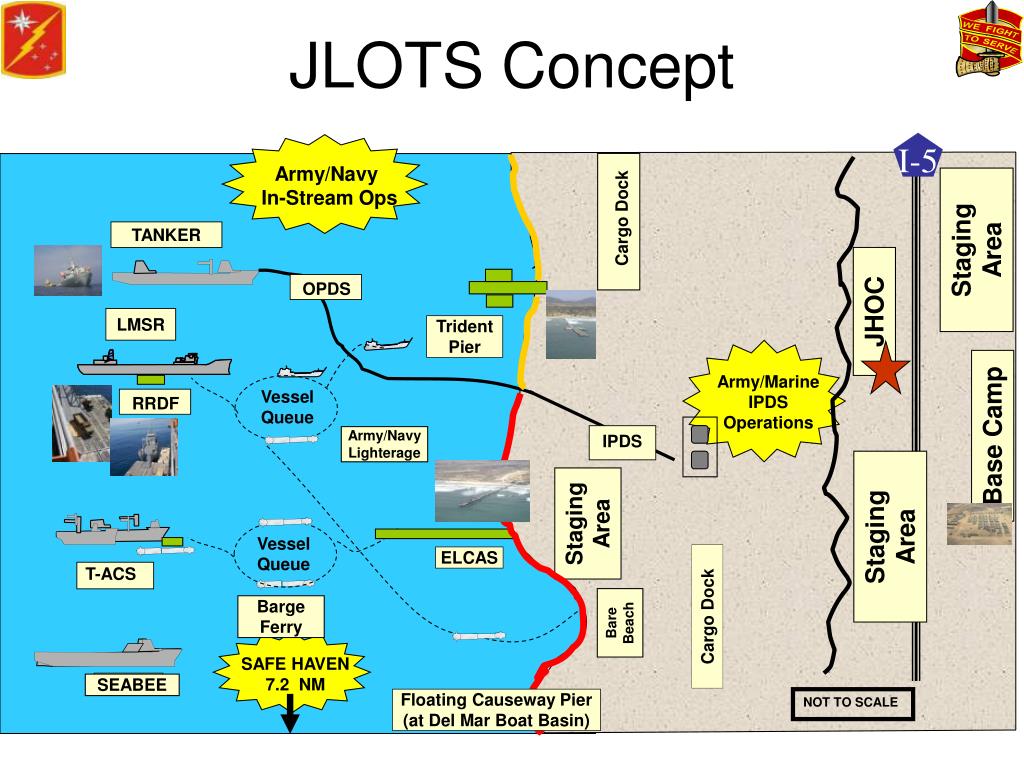
While some of these options may get around putting troops directly on Gazan soil, that doesn’t mean they would not be at risk and such a pier would have to be constructed by U.S. personnel. Regardless, doing so would require very robust external support and security cooperation.
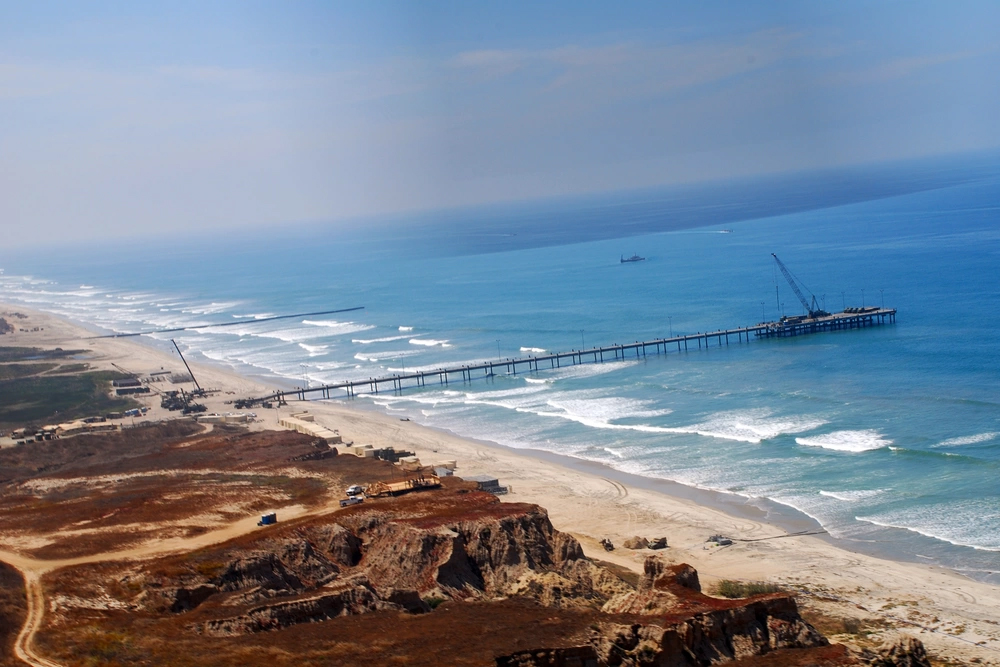
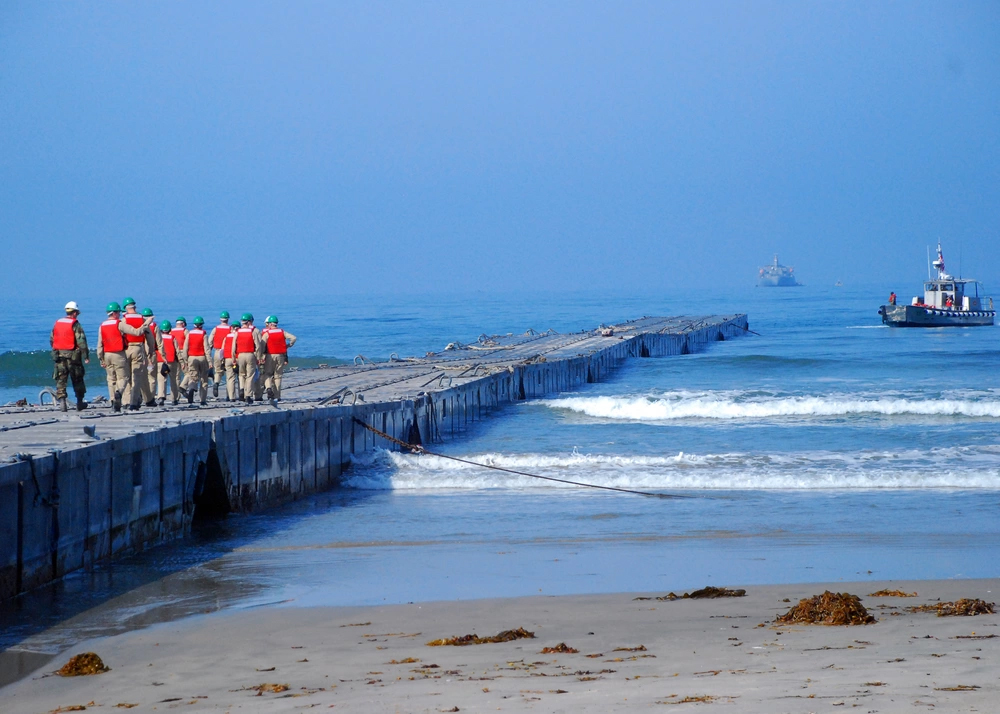
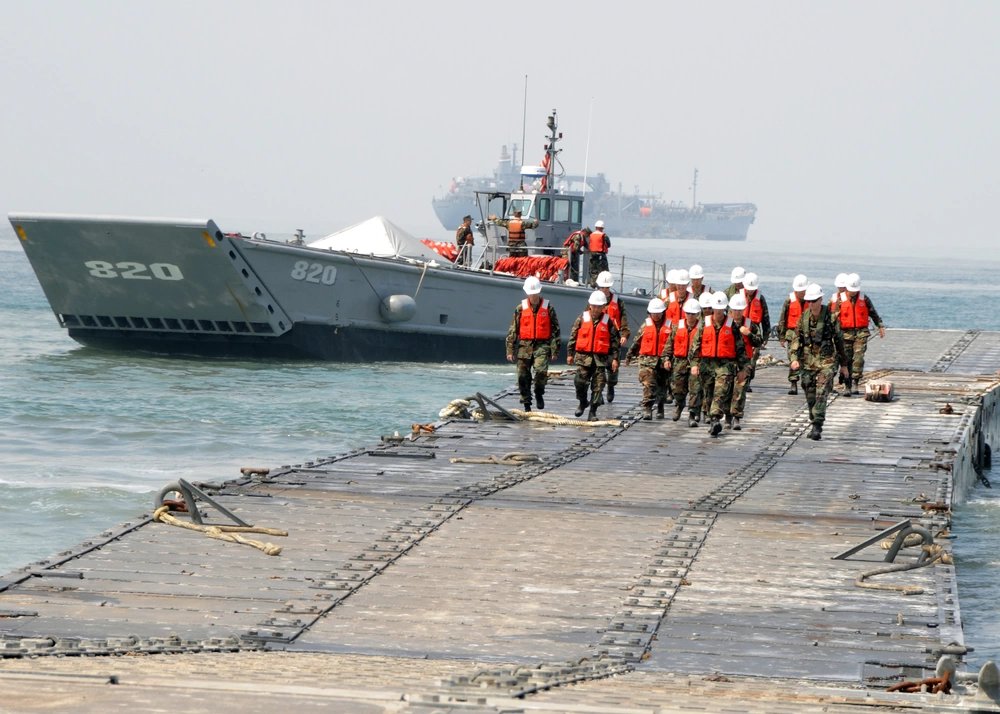
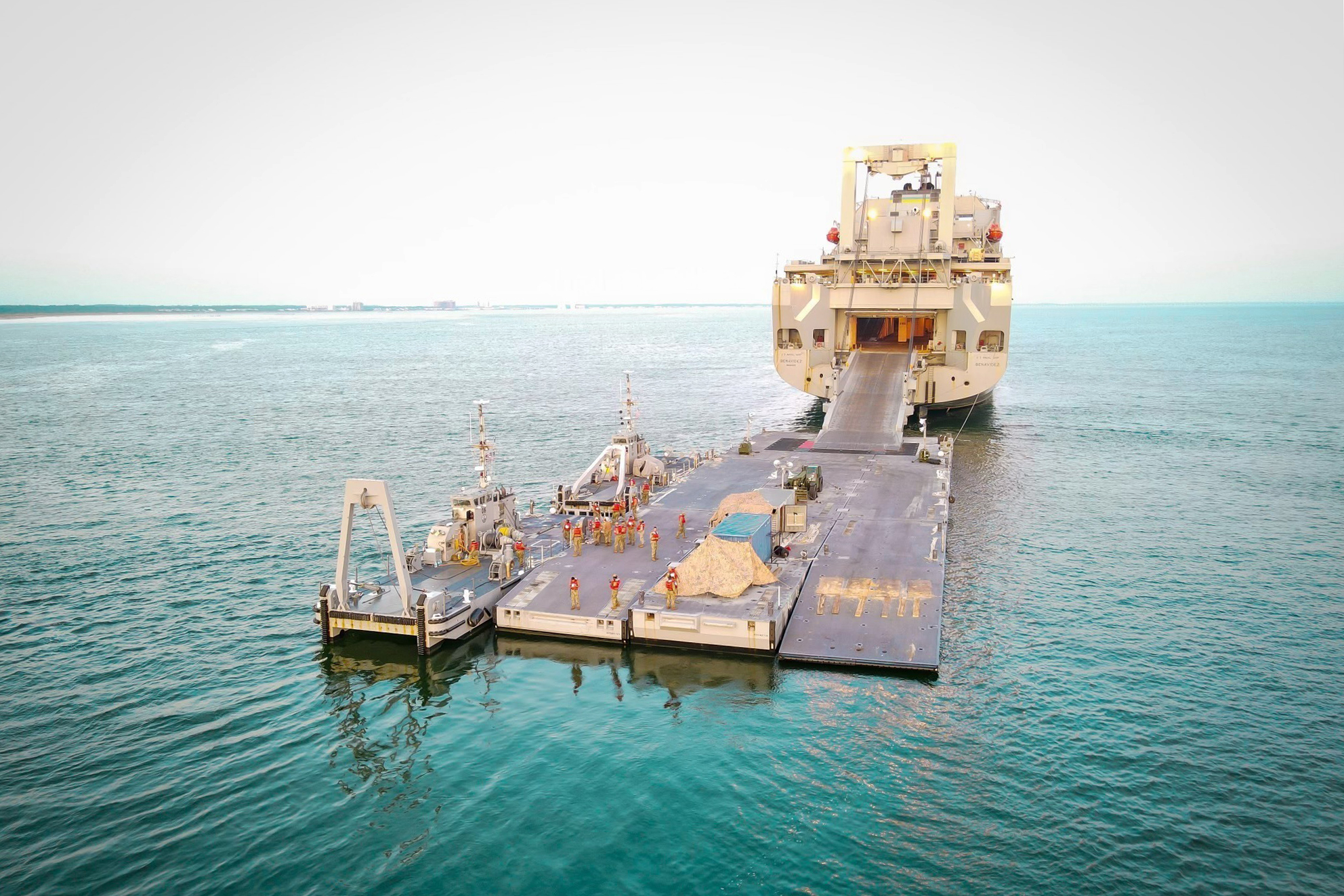
Any large U.S. naval operation close to Israeli shores could also put these ships in the engagement envelope of Hezbollah’s anti-ship missile capabilities. Although this secondary risk could be mitigated to a degree — and so far Hezbollah doesn’t appear ready to provoke the U.S. on that level — this could change at any moment.
As of now, it isn’t clear if Israel will take any part in securing the operation, which seems as if it would be a necessary feature of such an endeavor. With thousands of troops and heavy armor in Gaza already, they could play a key role in facilitating the operation. How else this would be pulled off without putting some type of external force on the ground isn’t clear.
In a post on X, Axios‘ Barak Ravid says an unnamed Israeli official told him that “Israel welcomes & fully supports the deployment of a temporary dock to facilitate further humanitarian aid to Gazan civilians” and that “the initiative has been discussed by U.S. and Israeli officials, and will be carried out with full coordination between the two parties.”
Still, this doesn’t mean Israel will devote large amounts of resources toward the operation and risk its own troops providing actual security for it, but it is certainly possible.
Irrespective of how this is supposed to be done, troops on the ground of any kind would be at extreme risk not just of extremist attack, but of being overrun by a desperate populous. Troops just protecting themselves in such a situation could ignite a much more violent response if force were needed to be used to do so.
These are just some factors to consider, although something has to be done as Gaza clearly needs urgent help and Israel hasn’t been very willing to play a major part in providing it, at least up until now. This and the execution of the bombing campaign on Gaza have perhaps been the biggest points of contention between the Biden and Netanyahu administrations, whose relationship has fractured deeper in recent weeks.
Any beachhead concept will take time to fully make an impact. Politico‘s report states:
“Four other U.S., European and Middle Eastern officials said many elements remain up for discussion. Smaller packages will soon come in by sea. But once a coordinated plan is in place, it would take 45 to 60 days before there’s a regular cadence of large assistance packages shipping across the Mediterranean.
The aid will initially flow through the Larnaca port in Cyprus, located about 230 miles from Gaza. It’s already fitted with high-tech screening equipment that allows Israeli officials stationed in Cyprus to check what’s inside the deliveries.”
The role the Arab world could play here is also not clear, but its support, and even troops, in providing security could be a major help, especially if Israel is unwilling to get involved. Just how much Israel would tolerate such an arrangement is another unknown, though.
There is also the question of how Congress, which is in political turmoil as it is, will react to such a proposition.
If anything, even floating such an idea is indicative of just how perilous the situation has become in rubble-strewn Gaza.
Contact the author: tyler@twz.com
